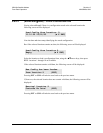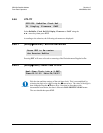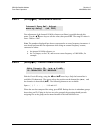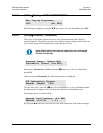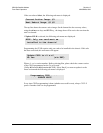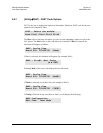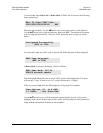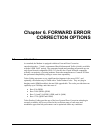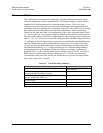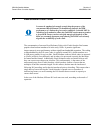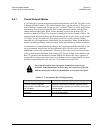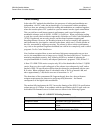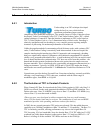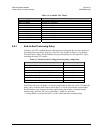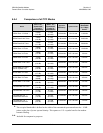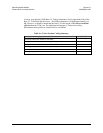
CDM-Qx Satellite Modem Revision 5
Forward Error Correction Options MN/CDMQx.IOM
6–2
6.2 Viterbi
The combination of convolutional coding and Viterbi decoding has become an almost
universal standard for satellite communications. The Modem complies with the Intelsat
standards for Viterbi decoding with a constraint length of seven. This is a de facto
standard, even in a closed network environment, which means almost guaranteed inter-
operability with other manufacturer’s equipment. It provides very useful levels of coding
gain, and its short decoding delay and error-burst characteristics make it particularly
suitable for low data rate coded voice applications. It has a short constraint length, fixed
at 7, for all code rates. (The constraint length is defined as the number of output symbols
from the encoder that are affected by a single input bit.) By choosing various coding rates
(Rate 1/2, 3/4, or 7/8) the user can trade off coding gain for bandwidth compression. Rate
1/2 coding gives the best improvement in error rate, but doubles the transmitted data rate,
and hence doubles the occupied bandwidth of the signal. Rate 7/8 coding, at the other
extreme, provides the most modest improvement in performance, but only expands the
transmitted bandwidth by 14 %. A major advantage of the Viterbi decoding method is
that the performance is independent of data rate, and does not display a pronounced
threshold effect (i.e., does not fail rapidly below a certain value of Eb/No). Note that in
BPSK mode, the Modem only permits a coding rate of 1/2. Because the method of
convolutional coding used with Viterbi, the encoder does not preserve the original data
intact, and is called non-systematic.
Table 6-1. Viterbi Decoding Summary
FOR AGAINST
Good BER performance - very useful coding gain. Higher coding gain possible with
other methods
Almost universally used, with de facto standards for
constraint length and coding polynomials
Shortest decoding delay (~200 bits) of any FEC scheme -
good for coded voice, VOIP, etc
Short constraint length produce small error bursts - good
for coded voice.
No pronounced threshold effect - fails gracefully.
Coding gain independent of data rate.



